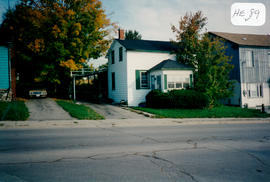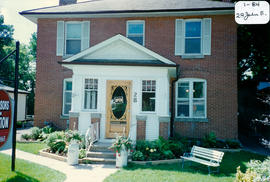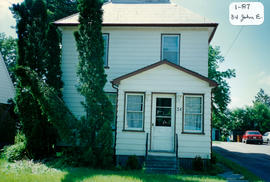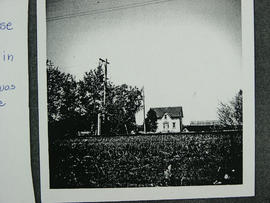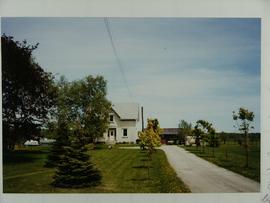89 Holland Street East - Saint/Marks House
- CA BWGPL GJ-HB-2017-03-27-04
- Item
- 1995
Part of George Jackson fonds
The two-storey, frame house located at 89 Holland St. East was the home of Tom and Mary (Harman) Saint for many years. The structure was moved across the river to this site from the Thompson Smith Saw Mill (at Amsterdam) after it closed. A crawl space under the back kitchen was replaced in 1936 by a cellar under the front part of the house. It was dug by Jim (Dummy) Peters, Donald Campbell, and Joe Saint using pick-shovels. They then poured an 8” concrete wall. An oil furnace was installed after the front cellar was completed. It replaced the wood-fueled cooking stove previously used as a heat source for the house. Tom owned the property from Holland St. through to John Street. There was a lane behind the house that led to a woodshed. At the bottom of the lot there was a shed for a wagon, buggy, implements, etc. Upstairs was a loft for hay and on the east side there was a horse stable. Tom was a stone mason, brick layer, plasterer, and cement layer. He used a horse to haul his materials. Six children (William, John, Sadie, Leonard, May and Jane) were raised in this house. Sadie married Walter Reeves, a lacrosse player and a one man/one dog police force. Sadie lived at home and Dorothy married Harvey Marks and stayed in the family till 1989. A front porch and a car port at the back were eventually added. The lot at the back was sold to William Smith. (1, 2)
George Jackson

